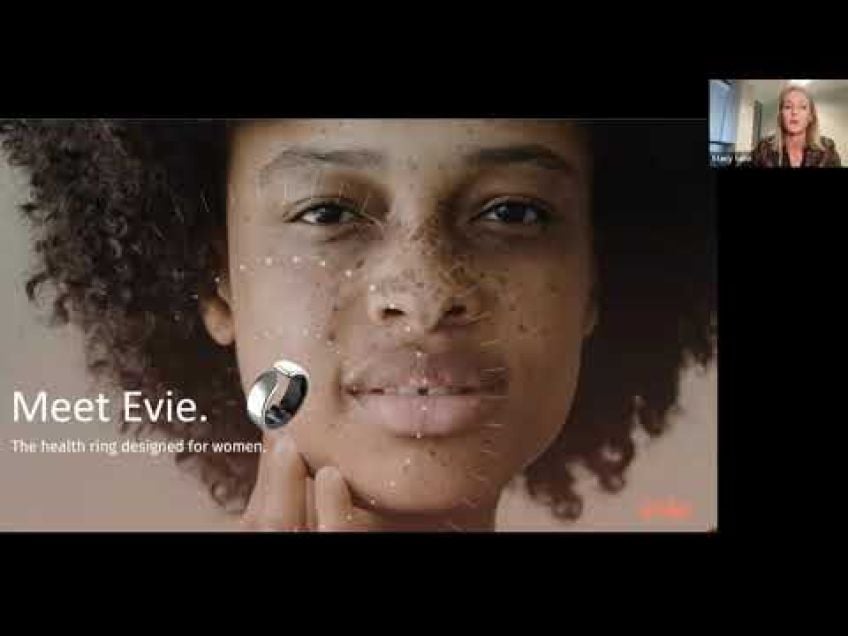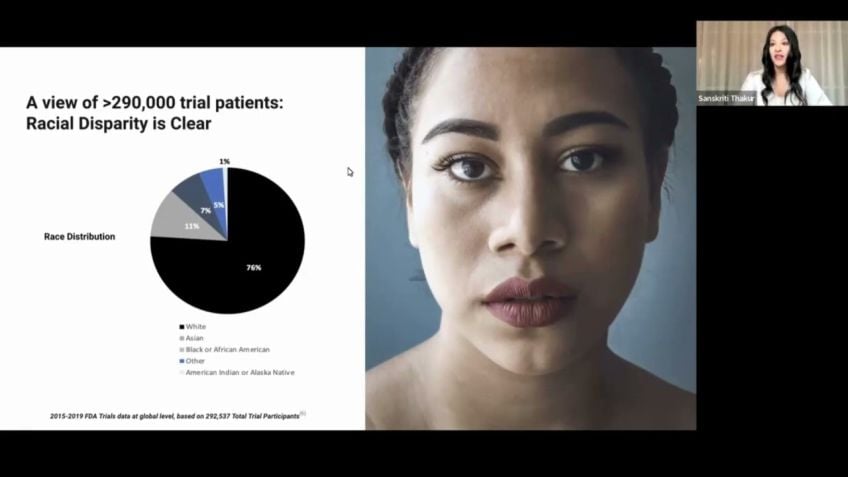Bringing Women’s Health to the Forefront of Wearable Tech by Neta Gotlieb
Bringing Women's Health to the Forefront of Wearable Technology with Meta, Lead Scientist at Aura
Hello, my name is Meta, lead clinical research scientist at Aura. I am thrilled to be here to discuss the importance of addressing women's health in the sphere of wearable technology. Have you pondered on how society's standard definition of 'norm' compares with the unique variations of individual bodies? This article will take a closer look at the relevance of wearable technology to women’s health.
Understanding the Individuality of Our Bodies
Each one of us has a unique body that functions differently from the average population level. You might have encountered this through symptoms such as a body temperature that differs from the average, menstrual cycles that do not follow the standard 28-day myth, or blood pressure that appears lower than most people's.
The discrepancies between population expectations and individuals' real-life experiences are clear, paving the way for personalized health solutions. I have felt this difference distinctly during my own pregnancy while conducting research on pregnancy regulation at UC Berkeley. Being pregnant is a compelling journey of self-questioning, often leaving you wondering, "Is this normal?".
Exclusion of Women in Research
In many historical and even some contemporary research studies, women and people with menstrual cycles have been overlooked. This has led to over-medicated women because of the false assumption that males and females respond similarly to drug doses. Women are not just smaller men, and our bodies metabolize and absorb drugs differently.
This has resulted in misdiagnosis of ailments like sleep disordered breathing and heart attacks due to the focus on male-centric data. As a result, the need for the integration of women's health into wearable technology becomes evident.
The Ascending Attention to Women’s Health
Thankfully, women's health is beginning to attract more attention, as seen in the rising Femtech funding. Women's health is not to be isolated; rather, it forms an integral part of our overall wellbeing. It is high time we shifted our focus to menstrual cycles as the fifth vital sign.
The emergence of numerous cycle tracking tools, along with an increasing number of apps, shows the tech industry’s growing concern for women’s health. Also, the need expands to different aspects across the entire reproductive life cycle.
The Power of The Aura Ring
During my experience at the University of California, Berkeley, I discovered the Aura Ring. It is a smart ring that measures various health metrics from the finger arteries, creating a window into your health habits. With features like continuous temperature tracking, Aura offers a convenient alternative to the inconvenient traditional methods of tracking fertility.
The Role of Temperature in Cycle Tracking
Skin temperature naturally fluctuates with menstrual cycles, affected by hormones like estrogen and progesterone. As such, continuous tracking of your temperature can provide insight into your menstrual cycle phase.
A Holistic View of Women’s Health
The interaction of the menstrual cycle with other body systems necessitates a closer look at the various changes throughout the cycle. Aura can now predict a period 30 days in advance and offer insights into sleep and activity patterns across your cycle.
The Wondrous Path of Wearable Technology
By leveraging wearables and personalized continuous data, we can understand our bodies as they change. This enables more accurate cycle tracking and natural family planning. We are at the cusp of a technological boom that will facilitate greater understanding of fertility, cycles, menopause, and pregnancy.
We have a responsibility to promote wearable tech research and health advancements for everyone, fostering an environment where everyone can make informed decisions based on their bodies. I invite you to join us in this exciting journey towards improving women's health technology. Thank you for walking this path with me.
Video Transcription
So let's get started. My name is Meta and I'm the lead clinical research scientist at Aura. Um I want to thank you all for joining this session. I'm very excited to be here today and talk with you all about bringing women's health to the forefront of wearable technology.Now, before I begin, I'd like to ask you um a question and you can share your answers in the chat. So here's my question. Have you ever felt like the way your body works doesn't always fit with the standard definition of the norm or the average uh population level? Have you ever felt that perhaps your typical body temperature is slightly warmer or cooler than the average? And you find yourself repeatedly explaining that to others or perhaps your menstrual cycle isn't exactly 28 days as the myth claims or maybe your blood pressure is lower than most people, but that is normal for you and you have to keep explaining that to others. Yeah. From the responses I see in the chat, this is quite common and I'm not surprised because uh so many aspects um in so many aspects of the expectations of how our body should work at the population level, don't always apply at the individual level. So here's a time or one of the times where I felt this discrepancy between the population knowledge and my own several years back, I was conducting research at UC Berkeley to study the neural and hormonal regulation of pregnancy.
And I also happened to be pregnant myself for some of that time. Um As some of you may have experienced being pregnant often involves this self questioning of, is this normal? Is that normal? Is that thing? I'm feeling a normal pregnancy thing or should I be concerned? At least that was my experience. Now, as a scientist who studies reproductive health, I knew a thing or two about pregnancy. But what I knew was through the population level and not necessarily true for me. So I wanted to understand what's happening in my body and I wanted to be able to track how my body is changing throughout pregnancy. And after birth, I found that there are so many apps out there that tell you that this week your baby is the size of a lemon. But what about the person carrying the baby? I found no solution for the pregnant person, but let's not make this about me. Um Women and people with cycles have been historically excluded from research because of concern, working and women are suffering the implications of that approach. A recent study by Zuern Predo Grass found that the lack of females in drug dose trials leads to overmedicated women.
The assumption is that in those trials was that women can be treated with the same doses as men sometimes correcting for body size and the physiological impact would be the same. But it turns out that women are not just small men, the absorption and metabolism of the female body is different than the male body. So when women were given the same drug doses, men, they had higher concentrations of the drug in their blood. And it took longer for the drug to be eliminated from their bodies. And in more than 90% of the cases, women experience worse side effects. Another example is with sleep disordered breathing. Um it's likely underdiagnosed in women in reproductive ages and in pregnant women because these groups have been historically excluded from research. So the risk factors and the symptoms that the diagnosis is based on are generated based on male data, there is also a higher misdiagnosis rate of heart attacks in women compared to men for similar reasons. And women complaining of symptoms consistent with heart disease are twice as likely to be diagnosed with a mental illness compared to men who complain of identical symptoms, health tech as well. And the industry at large has historically ignored women's health.
And at the end of the day, ignoring women's health impacts the product value because studies show that in cases where technological solutions weren't meeting women's need needs. Um Women didn't see the value of these solutions. Fortunately, as we can see in the Femtech figure um here on the right. Um in the fete uh funding figure, women's health is beginning to get more attention. But why women's health, why is it so important? Women's health is an integral part of our overall health. You cannot abstract the menstrual cycle from one's general health and well being. There is a reason why obgyns talk about menstrual cycles as the fifth vital sign, we should be paying a closer attention to it rather than ignoring it. Fortunately, as tech is beginning to pay more attention to women's health, more and more cycle tracking tools are becoming available. There are already more than 1000 cycle tracking apps in the app store alone, which is wonderful. And as you can see in the image on the right, the menstrual cycle isn't the only need, there are needs across the entire reproductive life cycle. Each reproductive life stage is a huge stand-alone market that is currently being underserved. Now, back to my problem of tracking my own physiology. Uh Back then at UC Berkeley, a colleague of mine, I was conducting a study using a smart ring called the aura ring. And when I heard about it, I had to try it.
So I use the O ring to track my heart rate, my heart rate variability, temperature sleep, to name a few um throughout my pregnancy and postpartum and as a data nerd, it gave me the reassurance that I was looking for that my body isn't spiraling out of control or at least not in ways that are inconsistent with pregnancy.
This was such a profound experience for me that I ended up reaching out to people at aura. And I said, hey, from my perspective, as a scientist, here's, here's what I know about reproductive physiology and here's what I understand about your ring and its sensors. And if I'm connecting these dots, I see tremendous potential for or to move the needle for women's health. Fortunately, people or were thinking the same thing. And shortly after I joined the company to help move that needle. So what is the A ring? And why was I so excited about its potential for women's health? It's a smart ring that uses sensors that measure directly from the finger arteries to track a variety of health matrix which are viewed uh in an app that is paired with the ring. So the app tracks your sleep, your heart rate, your heart rate, variability, respiration, rate, temperature to name a few and it generates daily scores um for sleep activity readiness to provide a window into your health habits. And you can interact with the app by tagging different events like caffeine, alcohol, stress, period, light meal, and more. Um and then explore how different behaviors or lifestyle choices affect your sleep and your readiness and your overall health So the reading can help you um make health care a daily practice by understanding relationships between behavioral choices and physiological outcomes. So you can make more informed decisions.
Like, do I really want to have that cup of coffee at 4 p.m. Knowing that historically, coffee after three affects my sleep or affected my sleep. Another aspect that can make a huge difference for women's health is the continuous temperature tracking. Um and you can see that on the bottom, right, many women who are interested in tracking their fertility, wake up at 5 a.m. every day, every morning to measure their oral temperature, which is quite inconvenient. So, measuring skin temperature automatically and continuously unlocks an opportunity to utilize temperature tracking technology to move women's health research and solutions forward. And here's why temperature naturally fluctuates across the menstrual cycle because it is impacted by hormones like estrogen and progesterone in the first part of your cycle in the follicular phase, estrogen is rising as you can see in the gray bump on the right figure and it cools your body temperature.
And you can see that in the vertical yellow bars as estrogen is continuing to rise, there is a surge of LH luteinizing hormones in brown here that triggers ovulation. After ovulation begins the second portion of your cycle, the luteal phase where progesterone is the predominant hormone and that is the orange bump and progesterone raises your temperature. So as you go through your menstrual cycles, you experience these cool, warm, cool, warm effects of the hormones.
The bottom figure shows a view that is similar to what AA members see in their app the zero or the horizontal line um is the personal baseline. And the green bars are the fluctuations in temperature that occur over time. Each bar represents one night. So continuously tracking your temperature can provide a window to where you are in your menstrual cycle. But the menstrual cycle isn't just the reproductive system. It interacts with almost every other system in your body. With sleep with your activity, energy levels, heart rate, hearted variability, respiratory rates, all of these and more change throughout the cycle. Um And you can see some of these examples on the bottom figure. So yes, it's quite normal for your heart rate and your respiration rate to be elevated during the luteal phase of your cycle. Because the reproductive system interacts with so many other systems. The menstrual cycle can serve as a litmus test to your overall health as that fifth vital signs we've mentioned earlier and having this holistic view of how the different systems that are operating at different phases of the cycle enables aura to now predict your period 30 days in advance and offer insights related to your sleep and activity across the different phases of your cycle.
Another reason um many women and people are interested in tracking their menstrual cycles is to identify their fertile window. Traditional fertility awareness methods that track the fertility window face timing challenges. So here's the thing, the sperm can live in the female body up to five days and the egg is only viable for 24 hours after ovulation. So the fertile window mainly spends the time leading up to ovulation and shortly after. So knowing when you ovulate after the fact is not ideal. But fertility tracking methods currently try to estimate when the LH surge, that surge that triggers ovulation will occur. Based on LH test that identify the LH surge is already in progress based on oral temperature, that indicates a rise after ovulation or retrospectively confirm that ovulation occurred with ultrasonography or progesterone measures. So all of these options are too late for someone who is trying to identify their fertile window, whether the goal is to conceive or to avoid conception. In addition, one of the things I repeatedly hear from fertility clinicians I work with is how stressful it is for their patients to actively track their fertile window. It takes only a few minutes, but the burden on mental health is monumental for many fertility patients.
So, uh you can imagine how excited I was. Um when Grant and Creeks Feld from UC Berkeley used the O ring to automatically track changes in the rhythms of heart rate variability and skin temperature that anticipate ovulation. And they successfully predicted the LH surge days in advance in 100% of participants. Here's another example of the power of personalized and continuous data. So this study by U CS D scientists, Ma and Grant um they have launched a retrospective study among AA members to learn about the physiological changes occurring throughout pregnancy. The data is still being analyzed. Uh but the scientists shared preliminary results demonstrating their ability to detect pregnancy based on temperature elevation, an average of 5.5 days after conception which are nine days before at home pregnancy tests. That's pretty remarkable in the bottom, right? You can see an example of an aura, an example that an aura member has shared with us uh to tell us that they suspected they were pregnant because they were paying close attention to their data. But let me be clear, the temperature fluctuations across the menstrual cycle and the rise in body temperature post conception have been known for many years. This is not a new discovery.
The game changer is the technology that enables continuous measures to unlock the potential for new applications in women's health. So the studies I've shared here demonstrate the power of wearables and personalized and continuous data to help understand what's happening in our bodies as it happens.
And they also pave the way for more accurate methods for cycle tracking and natural family planning. These examples focus on the menstrual cycles and pregnancy. But the need is far greater wearable technology can move women's health and reproductive health forward by advancing research by busting myths by helping us understand relationships between systems in our bodies and between behavioral choices and physiological outcomes. So we can make more informed decisions.
Fortunately, wearables are finally investing in features for women and for people with cycles. So I believe we're going to see a technology explosion that will help track and better understand fertility cycles, menopause pregnancy, all of these underserved areas. But this goes beyond women's health.
The technology for comfortably tracking continuous personalized data is already here. So now wearables have the responsibility to support research and support health advancement for everyone. So everyone could make informed decisions based on their own body. Thank you. Thank you all for sharing this time with me and thank you Caroline Rider for the beautiful work on some of the images in the slide.




